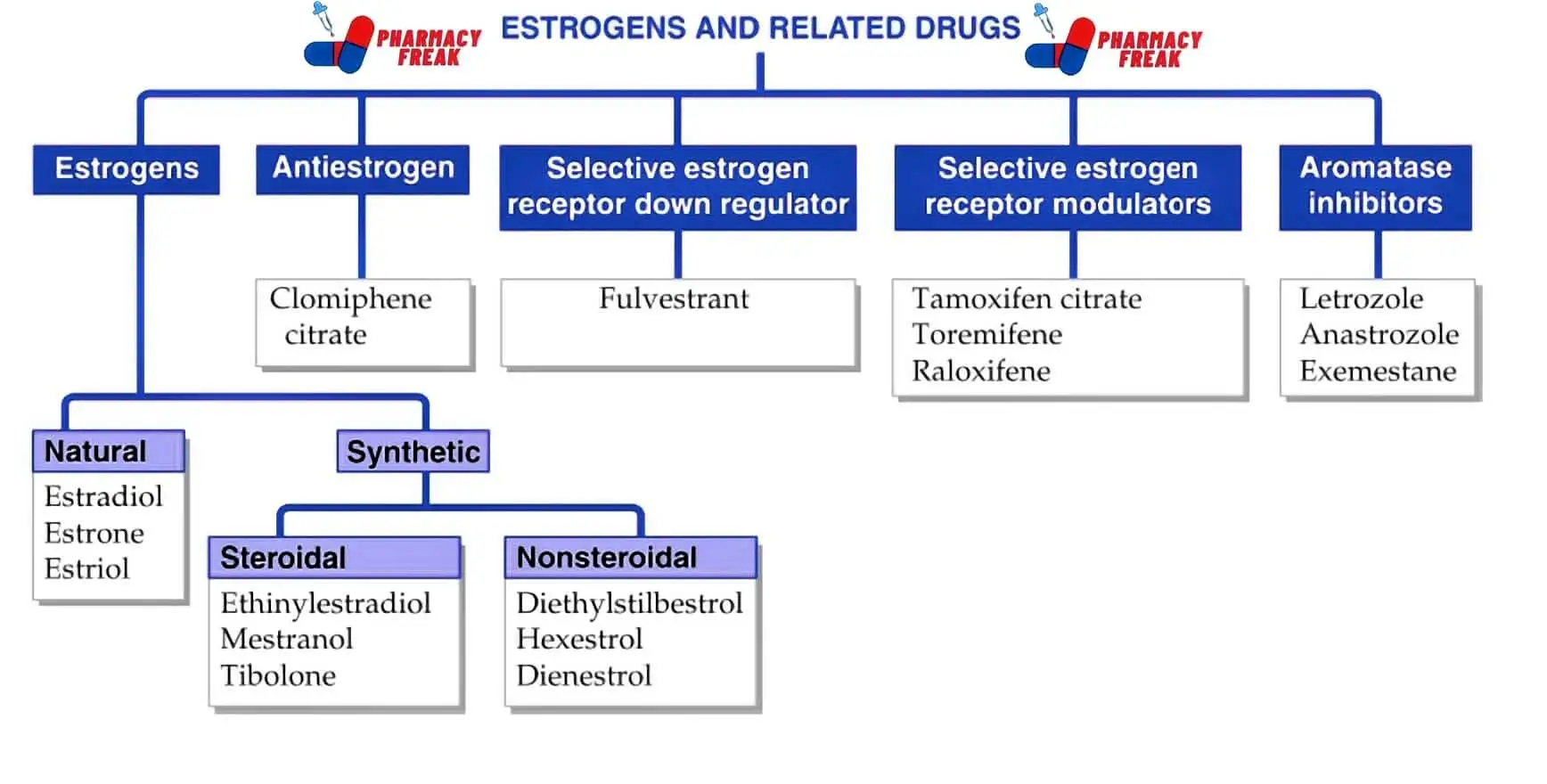Estrogens are a group of hormones primarily associated with the development and regulation of the female reproductive system. They are essential for various physiological functions in both women and men. Estrogens, along with their related drugs, play a crucial role in healthcare, particularly in the fields of gynecology, endocrinology, and oncology. In this classification of estrogens and related drugs.
Table of Contents
Classification of Estrogens and Related Drugs
ESTROGENS AND RELATED DRUGS
- Estrogens
- Natural- Estradiol, Estrone, Estriol
- Synthetic
- Steroidal- Ethinylestradiol, Mestranol, Tibolone
- Nonsteroidal– Diethylstilbestrol, Hexestrol, Dienestrol
- Antiestrogen- Clomiphene citrate
- Selective estrogen receptor down regulator– Fulvestrant
- Selective estrogen receptor modulators– Tamoxifen citrate, Toremifene, Raloxifene
- Aromatase inhibitors- Letrozole, Anastrozole, Exemestane
Natural Estrogens
- Estradiol (E2): This is the most potent natural estrogen and is produced by the ovaries. It’s used in hormone replacement therapy (HRT) and contraception.
- Estrone (E1): This estrogen is primarily produced in fat cells and is a weaker form of estrogen compared to estradiol.
Synthetic Estrogens
- Ethinyl Estradiol: A synthetic estrogen commonly used in birth control pills.
- Diethylstilbestrol (DES): Previously prescribed to prevent miscarriages but later discontinued due to safety concerns.
Estrogen Receptor Modulators
- Tamoxifen: Used to treat breast cancer. It acts as an estrogen receptor antagonist in breast tissue.
- Raloxifene: Used to prevent and treat osteoporosis in postmenopausal women. It also has anti-estrogenic effects on the breast.
Conjugated Estrogens
- Premarin: A mixture of conjugated estrogens derived from pregnant mare’s urine. Used in HRT.
Estrogen-Progestin Combinations
- Combined Oral Contraceptives: Birth control pills containing both estrogen and progestin hormones.
Selective Estrogen Receptor Modulators (SERMs)
Fulvestrant: Used to treat hormone receptor-positive breast cancer in postmenopausal women. It downregulates estrogen receptors.
Reference
- Classification of Progestins- KD Tripathi
- National Library of Medicine- Estrogen
Related Links

I am a Registered Pharmacist under the Pharmacy Act, 1948, and the founder of PharmacyFreak.com. I hold a Bachelor of Pharmacy degree from Rungta College of Pharmaceutical Science and Research. With a strong academic foundation and practical knowledge, I am committed to providing accurate, easy-to-understand content to support pharmacy students and professionals. My aim is to make complex pharmaceutical concepts accessible and useful for real-world application.
Mail- Sachin@pharmacyfreak.com
